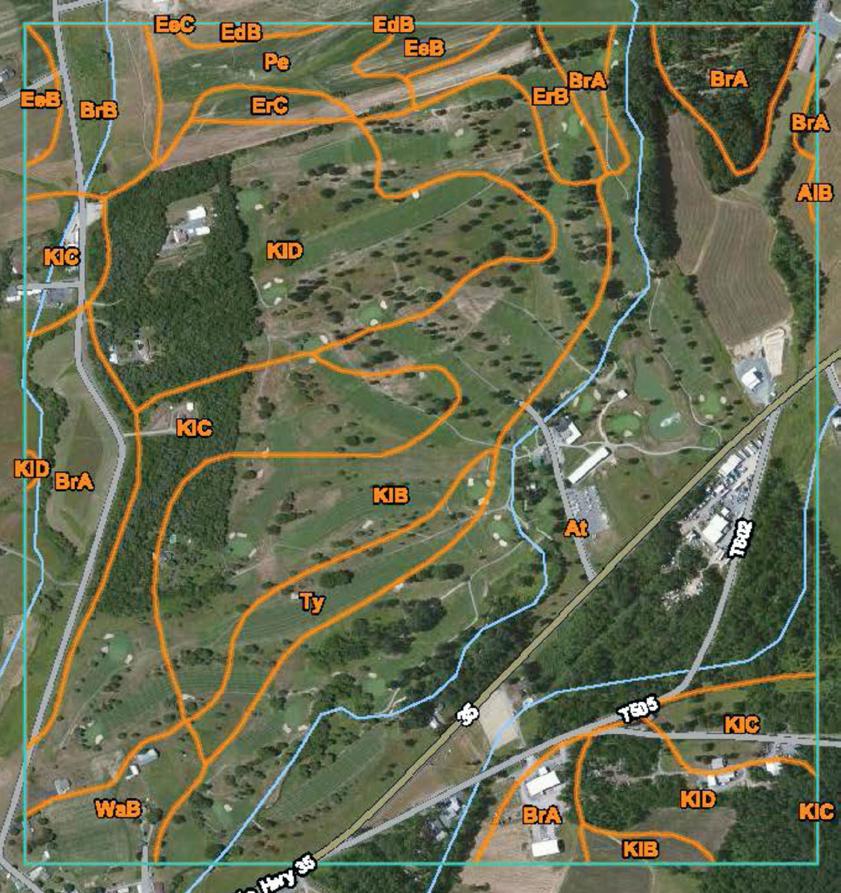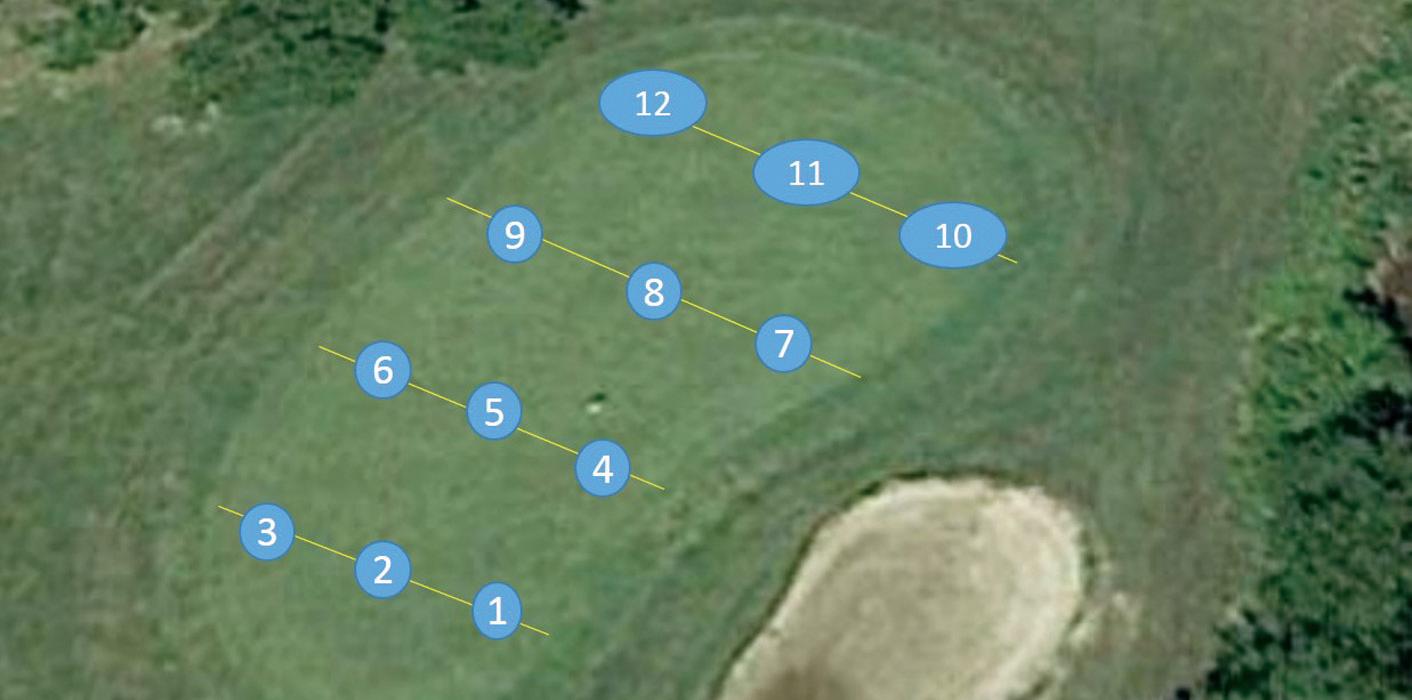
9 minute read
Developing a Golf Course Nutrient Management Plan
By Pete Landschoot, Ph.D., Professor of Turfgrass Science
Superintendents generally do a good job of monitoring the nutrient status of turfgrass and soil on their golf courses. However, keeping track of nutrient requirements and fertilizer programs on large properties with different turfgrass species, management regimes, soil types, and micro-environments can be challenging. A nutrient management plan (NMP) can help organize all or most of this information into a single document that can be shared with staff members at your facility. It can also demonstrate to club members, neighbors, and community organizations that you are taking an environmentally responsible approach to turfgrass fertilization.
Advertisement
A golf course NMP is a document that helps superintendents keep track of the nutrient status of soils and turfgrasses and provides a strategy for meeting the nutrient requirements of turfgrasses through proper application timing and amounts of fertilizer. Nutrient management plans can be relatively simple or complex depending on the goals of your golf course operation. The basic components of a NMP are:
1. A brief description of the topography, geology, and soil types on the golf course, and a map delineating soil types on the property.
2. An inventory of turfgrass species and management regimes, including maps designating greens, tees, fairways, roughs, and environmentally sensitive areas that may require different fertilization programs.
3. A summary of soil test procedures, results, and recommendations for the different management areas of your course, as well as a narrative of your nitrogen fertilization program, including rates, sources, and application timings.
4. A means of recording fertilizer application dates, product names, analyses, sources of nitrogen, rates, and total amounts used.
This article gives an example of a NMP that was developed for a golf course in central Pennsylvania. The plan has been simplified due to space limitations, but it provides a stepwise approach to implementing the basic components of a NMP.
Developing an NMP for Lost Creek Golf Club
In 2017, Penn State faculty worked with Mr. Tom Troutman, superintendent of Lost Creek Golf Club, to develop a NMP as part of a Chesapeake Bay Programfunded watershed improvement project. The primary purpose of this project was to monitor nitrogen and phosphorus fertilizer inputs and to stabilize eroding stream banks along Lost Creek. The grant also provided an opportunity to develop an example of a basic NMP for other golf courses in Pennsylvania.

Figure 1. Lost Creek Golf Club and surrounding landscape in early spring.

Figure 1. Google Earth satellite image of Lost Creek Golf Club property.
Lost Creek Golf Club is located in Juniata County, just north of Rt. 35 in Oakland Mills. The property is approximately 150 acres and is surrounded by dairy farms and some wooded areas. A unique feature of the golf course is Lost Creek, a Class A trout stream, which enters the northeast corner of the course, then proceeds south through a wooded area before cutting through mostly open areas on the southern portion golf course. Lost Creek is an important part of the golf course, creating interest, strategy, and impacting play on about a third of the holes on the course. Lost Creek floods on occasion, and, during periods of peak flow, some stream bank erosion occurs.
Step 1. Description and mapping of topography, geology, and soils
The first step in developing an NMP is to describe and map topography, geology, and soil types on your golf course. Knowledge of land and soil features can help you identify environmentally sensitive sites and delineate areas on the course that may need different types and amounts of fertilizer.
Soil survey manuals are a good source of information on topography, geology, and soil types. The USDA Natural Resources Conservation Service offers free internet access to soil survey information and map generation at Web Soil Survey https:// websoilsurvey.sc.egov.usda.gov/App/ HomePage.htm. Generating a soil map of your golf course takes a little practice, but the Web Soil Survey website provides directions which are relatively easy to follow. Fig. 2 shows a soil map of Lost Creek Golf Club generated with tools on the Web Soil Survey website. Lines surrounding soil type symbols delineate the different soil types on the course. Symbols within the lines correspond to soil types described in the soil survey manual.

Figure 2. Soil map with unit symbols for Lost Creek Golf Course. Map generated by USDA Natural Resources Conservation Service Online Web Soil Survey.
According to the Soil Survey of Juniata and Mifflin Counties, Lost Creek Golf Club has six main soil types: some with high water tables and strong acidity and some with low water holding capacity that contain shale and are well-drained. Soils with high water tables along Lost Creek are prone to flooding; thus, phosphorus and nitrogen should only be applied when the threat of flooding is low, if at all. Timing of applications on well-drained soils at higher elevations is generally more flexible.
Step 2. Inventory of turfgrass species and management regimes
The next step in NPM development is to make a list of the different turfgrass species on the property and specify how the turf is used and managed. At Lost Creek Golf Club, putting greens are a mixture of creeping bentgrass and annual bluegrass, whereas fairways, tees, and roughs are composed primarily of perennial ryegrass. Nutrient requirements vary for the different species and management areas.
Putting greens are mowed daily or every other day at a height of 0.135 inches, and clippings are collected and removed from the site. Greens are aerated once per year using a core aerator equipped with hollow tines. The tees at Lost Creek Golf Club are mowed at a height of 0.5 inches three times per week, and fairways are mowed at 0.75 inches three times per week during the golfing season. Clippings are not collected and are returned to the turf. The divot repair soil mixture contains some phosphorus to aid in fast establishment of new seedlings. Rough areas are mowed at a height of 2.25 inches once per week with clippings returned to the turf.
Step 3. Soil & water test results and fertilizer recommendations
Perhaps the most important part of a NMP is testing soil for pH and nutrient content. Monitoring water quality of any streams, ponds, or lakes that border or reside on the property is also important and can demonstrate that your fertilizer program is not contributing to degradation of surface waters. However, not everyone has the resources or expertise to monitor water for nutrients, so this information may not be included in some plans.
Soil Testing: Prior to 2017, the last time soils were tested at Lost Creek Golf Club was in 2011; thus, a new set of soil tests were needed to determine pH and nutrient concentrations of greens, tees, fairways, and roughs. In April of 2017, soil samples were collected from greens, tees, fairways, and selected rough areas prior to any fertilizer being applied. Twelve subsamples were collected in a grid pattern from each green, tee, and fairway using a 1-inch diameter soil sampling tube inserted 4 inches into the soil (Fig. 4). The 12 subsamples from each sampling area were placed in a bucket, broken apart, and thoroughly mixed prior to placing in the sample container. Samples were analyzed at Penn State’s Agricultural Analytical Services Lab (AASL) for pH and nutrients.

Figure 3. Map of different management areas for three holes on Lost Creek Golf Course. Areas outlined in red are greens, tees are outlined in blue, fairways are outlined yellow, and areas outside of outlined areas are rough. Map was generated using features in Google Earth.

Figure 4. Grid pattern for collecting 12 subsamples of soil from a putting green.
Soil tests results and recommendations from AASL were recorded on spreadsheets for all greens, tees, fairways, and certain rough areas. Table 2 shows an example of soil test data from 17 perennial ryegrass fairways at Lost Creek golf course (hole #9 does not have a fairway). Soil test results revealed acidic soils on most fairways, with pH values ranging from 5.44 to 6.03. All fairways received lime recommendations ranging from 50 to 90 lbs/1000 ft 2 . Soil-test phosphorus values in fairways range from 28 to 83 ppm Mehlich-3 P, and recommendations were for no phosphorus in 11 fairways and 1.0, 1.5, or 2.0 lbs phosphate fertilizer/1000 ft 2 for the remaining six fairways. Soil potassium concentrations range from 86 to 189 ppm Mehlich-3 K. Four fairways received no potash recommendation, whereas 13 fairways received recommendations of 1, 2 or 3 lbs of potash fertilizer/1000 ft 2 . Treating fairways individually with only the recommended amounts of lime, phosphorus, and potassium can save money and reduce the chances of applying excessive nutrients.
Soils test results and recommendations for greens, tees, and rough areas on the course are not included in this article. In most cases, pH and concentrations of phosphorus and potassium were in the acceptable range for greens and tees. Soils in rough areas were generally acidic and low in phosphorous.

Nitrogen recommendations: Soil tests are not reliable for making nitrogen recommendations in turf; thus, general recommendations are based on the primary turfgrass species present in the stand and how the turf is used. Annual applications of nitrogen for putting greens, tees, fairways, and rough areas can range from 2.0 to 4.0 lbs/1000 ft 2 per year in Pennsylvania. This range is fairly wide because of differences in the age of turf, mowing frequency/clipping removal, soil root zone composition, rainfall and irrigation amounts, expectations of golfers, and other factors.
Given that the greens at Lost Creek Golf Club are mature and in good condition, nitrogen in the low range (2.0 to 2.5 lbs nitrogen/1000 ft 2 ) was suggested as an annual rate. Annual nitrogen rates for fairways in poorly drained and floodprone areas should be in the low range (about 2.0 lbs nitrogen/1000 ft 2 per year or less), and fertilizer should not be applied during periods when the risk of flooding is high. Nitrogen rates for fairways in elevated areas can be slightly higher and should be applied during spring and late summer/early fall. Little to no nitrogen is recommended for rough areas in the poorly drained areas along Lost Creek, unless new turf is established.
At Lost Creek Golf Club, financial limitations, wet soils, and environmentally sensitive areas along Lost Creek dictate fewer nitrogen and phosphorus applications and lower rates than commonly used for most Pennsylvania golf courses.
Step 4. Record keeping
Most golf course superintendents keep careful records of fertilizer applications on their golf course and these can be inserted into the NMP. Records of fertilizer applications typically include dates, product names and analyses, sources of nitrogen (slow versus quick release), rates, and total amounts used. An example of a fertilizer application spreadsheet for putting greens is provided in. Record keeping is helpful for tracking fertilizer applications to different areas of the course, and from one year to the next.
Conclusion
Other aspects of golf course NMPs not included in this article are procedures for operating and calibrating fertilizer application equipment, containing and cleaning up fertilizer spills, disposal of unused and/or damaged fertilizer products, storage, and monitoring of water resources on the property.
Nutrient management plans are not required for golf courses in Pennsylvania, but they are mandatory in Virginia, Wisconsin, and some other states. Proposed legislation in Pennsylvania would allow for greater flexibility of fertilizer programs if a NMP and soil testing program is in place. For additional information on developing NMPs see:
“Turfgrass nutrient planning” by D. Soldat, Univ. Wisconsin Coop. Ext., https://learningstore.uwex.edu/Assets/ pdfs/A3876.pdf.
Examples of NMPs for Virginia golf courses can be found at: http://www.dcr. virginia.gov/soil-and-water/document/ nmtmsc-example-golf-npm.pdf and https://cdn.cybergolf.com/images/373/ Sample-NMP-Report.pdf
Funding for nutrient management plan development and stream bank restoration at Lost Creek Golf Club was provided by the National Fish and Wildlife Foundation through the Chesapeake Bay Stewardship Program’s Small Watershed Grants.









